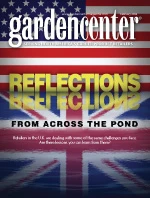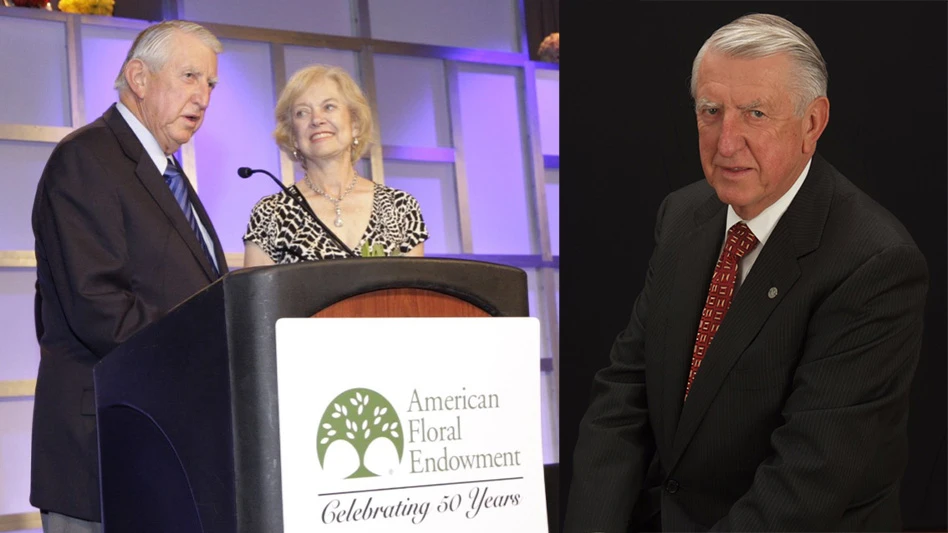 Emily Harvey is manager of Emily’s Barn, the gift shop at Harvey’s Farm in Westborough, Mass. A savvy marketer and avid student of the game of retail, Emily has turned the retail portion of the family business into a destination center for customers from all over the Northeast. This month, she shares her merchandising philosophy, along with some strategies other retailers can use to pique customer interest and improve sales.
Emily Harvey is manager of Emily’s Barn, the gift shop at Harvey’s Farm in Westborough, Mass. A savvy marketer and avid student of the game of retail, Emily has turned the retail portion of the family business into a destination center for customers from all over the Northeast. This month, she shares her merchandising philosophy, along with some strategies other retailers can use to pique customer interest and improve sales.
Garden Center: Do you have a basic philosophy about merchandising that you use at the garden center?
Emily Harvey: Whether it’s just brainstorming about a display or thinking generally how I merchandise, I’m always taking into account what are the trends; both in color combinations and in themes. I’m always soaking up new ways to pair colors that explore color theory and those often simple relationships: monochromatic, complementary and triadic. We use as many “non-traditional” display components in our displays as possible – highlighting the use of painted props, apple boxes as a structured backdrop, antique sleighs, apple presses, etc. When thinking about our product line, we also consider the importance of cross-merchandising the same item throughout our retail space in various ways; wherever it continuously sells from what we consider a “hot spot.” We also utilize color blocking and the use of vertical displaying using varying heights within that display for visibility and interest. We color block our Proven Winners Trays, not only for ease to our customer, but it’s also an attractive way to display these must-haves.
GC: How much attention do you pay to merchandising ideas you see “outside the bubble”—that is, at retail operations that aren’t hort-related?
EH: Whenever I’m shopping at my leisure or shopping the market, perusing a favorite magazine for eye candy or observing what’s coming off the runway, I’m always attempting to apply it to what we do. I think to myself, “How I can adopt a theme that seems a bit ‘out there,’ but still appropriate to what we do?” In order to stay fresh, you must stay current with everything your customer is coming into contact with, not just the latest flower varieties. Sometimes a theme might be too much of a stretch for who we are as a company, but it’s important to stay on top of how our customer is living, what they’re doing and where they are.
GC: Are there some basics you do with displays?
EH: I’m always considering design elements that will go in each display. I want to make sure I’ve encompassed varying heights, aesthetic balance and utilized odd numbers so the display is visually-pleasing. There is always a theme being explored in each hutch, display box or “department.” The theme might be simply about a color theme, or a theme in products surrounding a season, event, holiday or purpose. Our apple boxes that tie in with our “country” look have the flexibility to be stacked and turned in various configurations, and we have painted a number of them to have an alternative from their natural wood finish. When conveying an idea through product, it’s important that I’ve presented those items in a simple, uncluttered, orderly fashion.
GC: Do you have a color strategy with regard to merchandising?
EH: For an artist, color is always a huge motivation. Having an art background has given me the confidence to try different color combinations and creating a mood when selecting a background color and those appropriate products to display. I’ve paid attention to the Pantone color of the year, and instead of using it as a base to purchase products in that particular hue, I use it as an invitation to introduce the color as a backdrop to our displays. We’ll buy paint in that color and paint variously-shaped and sized props to intermix with plants, candles or garden accessories. As an example, we’ll look at a hot flower, like the Proven Winners’ Pretty Much Picasso and pull the Pantone Honeysuckle or Chartreuse from the flower and paint a number of accessories with either of those colors to make a whole display be a bright “pop” of color.
GC: Again, thinking outside the hort box, are there companies that have drawn you to them because of their effective merchandising techniques?
EH: We’ve been in the gift business along with being a farm and garden center for many years, so it’s natural for us to look at non plant-related displays at the markets or out in the “real world.” Although we’re not selling furniture, I think businesses such as IKEA, Restoration Hardware, West Elm, etc., have done a great job giving people ideas for how to incorporate props, colors, textures and scale into their everyday living. Although we don’t sell futons and pendant lighting at our garden center, there’s nothing stopping me from looking at how they’ve created those vignettes and living spaces. I’m constantly looking at how these home, garden and living examples present the product to customers and brainstorming how to adopt that to what we do. From a catalog perspective, I think Kringle Candle has done a beautiful job at merchandising their product in a two-dimensional surface. We have used their catalog to inspire us for how to merchandise not only their white candles, but how we can create those themes with other merchandise.

Explore the February 2012 Issue
Check out more from this issue and find your next story to read.
Latest from Garden Center
- The HC Companies, Classic Home & Garden merge as Growscape
- Terra Nova releases new echinacea variety, 'Fringe Festival'
- Eason Horticultural Resources will now officially be known as EHR
- ScottsMiracle-Gro transfers cannabis subsidiary to focus on core lawn and garden business
- Should we start calling natives 'eco-beneficial plants'?
- Ellen Mackenbach-Lakeman appointed new CEO of Dümmen Orange
- $7,500 in therapeutic garden grants available from National Garden Bureau
- The Growth Industry Episode 3: Across the Pond with Neville Stein





